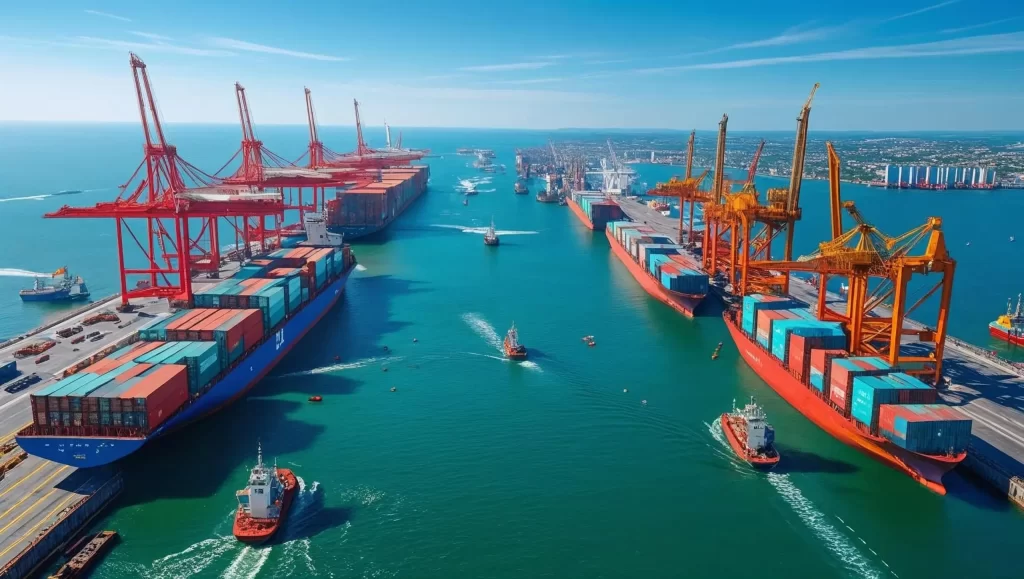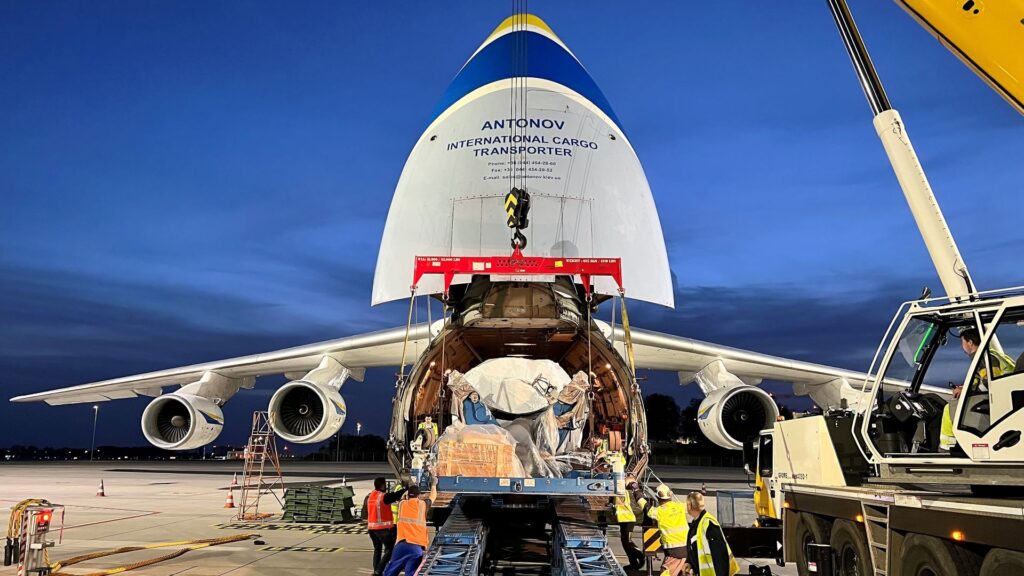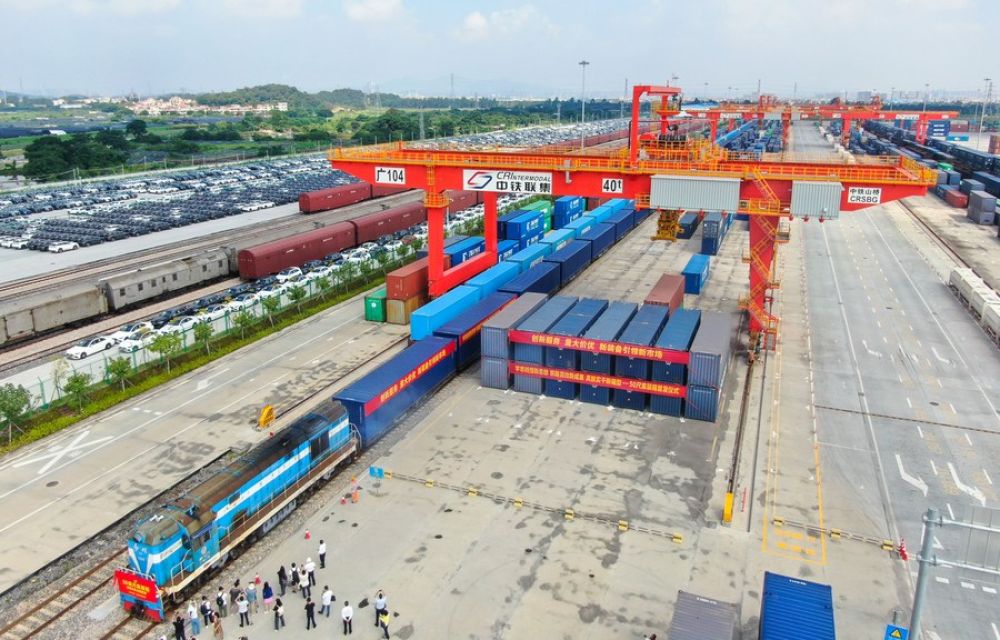- By Della tj
- September 22, 2025
- Sea Freight, Shipping
Global trade depends on efficient logistics, and ocean freight from China remains the most widely used shipping option worldwide. Although air freight offers faster delivery, businesses still rely heavily on sea shipping for cost efficiency, scalability, and flexible cargo options. Understanding freight costs, container types, transit times, and customs procedures helps importers optimize supply chains and stay competitive.
Why Do Importers Rely on Ocean Freight from China?
Ocean freight dominates international trade because of its unique advantages:
- Lower cost per unit compared with air or courier services.
- Capacity for bulk shipments, moving large quantities at once.
- Multiple container choices, including FCL and LCL.
Moreover, container shipping allows companies to plan production cycles and inventory levels with predictable schedules.
How Much Does Ocean Freight from China Cost?
Pricing depends on route, port congestion, container size, and market conditions.
Container Pricing (2025 Estimates)
| Route (China → US) | 20GP | 40GP | 40HQ |
|---|---|---|---|
| Shanghai → LALB | $2,200–$2,600 | $3,900–$4,300 | $4,200–$4,600 |
| Ningbo → NYC | $3,600–$4,100 | $6,700–$7,200 | $7,000–$7,500 |
| Shenzhen → Miami | $3,800–$4,400 | $6,900–$7,400 | $7,200–$7,700 |
Accordingly, planning early and comparing multiple carriers helps avoid seasonal surcharges.
What Affects Ocean Freight Pricing?
Several variables influence shipping rates:
- Distance and route popularity
- Container type (20GP, 40GP, 40HQ, reefer)
- Fuel surcharges and GRIs
- Seasonal demand during peak shipping months
- Delays due to port congestion
Additionally, global events such as strikes, storms, or regulatory changes can quickly alter pricing.
How Long Does Ocean Freight from China Take?
Transit times depend on port pairings, shipping lines, and seasonal congestion.
Sea Freight Transit Times
| Origin Port (China) | Destination Port (US) | Transit Time (Days) |
|---|---|---|
| Shanghai | Los Angeles (LALB) | 15–18 |
| Ningbo | Oakland (OAK) | 16–20 |
| Shenzhen (Yantian) | Long Beach (LALB) | 17–21 |
| Qingdao | New York (NYC) | 30–35 |
| Shanghai | Houston (HOU) | 28–32 |
In addition, delays caused by customs inspections can extend delivery times beyond averages.
Real-World Shipping Cases
Case 1: Furniture from Ningbo to Los Angeles
- Cargo: 2×40HQ containers of furniture
- Mode: FCL sea freight
- Cost: $9,200
- Transit Time: 19 days
- Result: Importer achieved 55% savings compared with air freight.
Case 2: Electronics from Shenzhen to Rotterdam
- Cargo: 20GP container of smartphones
- Mode: LCL sea freight
- Cost: $2,200
- Transit Time: 28 days
- Result: Shared container allowed affordable shipping for smaller volumes.
Should You Choose FCL or LCL?
Comparison Table
| Factor | FCL (Full Container Load) | LCL (Less than Container Load) |
|---|---|---|
| Volume | Best for >15 CBM | Ideal for <15 CBM |
| Cost per Unit | Lower | Higher per CBM |
| Customs Handling | Faster, one declaration | Slower, multiple declarations |
| Risk of Damage | Minimal, sealed container | Higher, cargo mixed with others |
Therefore, businesses with growing volumes often transition from LCL to FCL for efficiency.
Customs Requirements for Ocean Freight
Proper documentation is critical to avoid clearance delays.
Customs Documents Checklist
| Document | Purpose |
|---|---|
| Bill of Lading (B/L) | Proof of shipment |
| Commercial Invoice | Declares value and description |
| Packing List | Identifies cargo contents |
| HS Code Declaration | Determines tariffs |
| Certificate of Origin | Needed for trade agreements |
| Importer Number (IRS/EIN) | Required for US clearance |
Additionally, accurate HS codes prevent costly fines and unexpected storage charges.

Ocean Freight vs. Other Shipping Methods
On the other hand, air freight remains essential for urgent, high-value cargo.
How to Lower Ocean Freight Costs
Strategies include:
- Book shipments early before peak season.
- Consolidate cargo to maximize container space.
- Negotiate contracts with forwarders for stable rates.
- Optimize packaging to avoid volumetric waste.
- Use alternate ports to bypass congestion.
Indeed, proactive planning is key to reducing total landed costs.
Why Work with Freight Forwarders?
Forwarders bring several advantages:
- Access to competitive wholesale rates.
- Priority space reservations during peak months.
- Expertise in customs clearance.
- Multimodal shipping solutions for flexibility.
Consequently, even small importers benefit from their support in international trade.
Conclusion
To summarize, ocean freight from China offers the most affordable and scalable logistics solution for importers. While slower than air transport, sea shipping enables cost-effective bulk transport across major trade lanes. By selecting the right container type, preparing customs documents carefully, and working with experienced freight forwarders, businesses can lower expenses and avoid delays. Ultimately, managing ocean freight from China effectively ensures competitive advantage in global supply chains.
- Consult TJ China Freight Forwarding for the lowest quote. They will provide you with reliable, cost-effective service.
FAQs
Q1.What is the typical cost of ocean freight from China to the USA?
Container shipping rates from China to the USA generally range $2,000–$7,500, depending on port, route, and season.
Q2.How long does sea shipping from China usually take?
Transit time ranges 15–40 days, influenced by carrier schedules, distance, and port congestion at origin and destination.
Q3.Can small importers benefit from ocean freight services?
LCL shipping allows small businesses to share container space, making sea freight affordable even for limited cargo volumes.
Q4.What paperwork is necessary for ocean freight clearance?
Key documents include Bill of Lading, packing list, commercial invoice, HS code declarations, and certificate of origin.
Q5.How does sea freight compare to air transport in pricing?
Ocean freight is far more cost-effective than air freight, especially for heavy cargo and large shipments requiring full containers.





